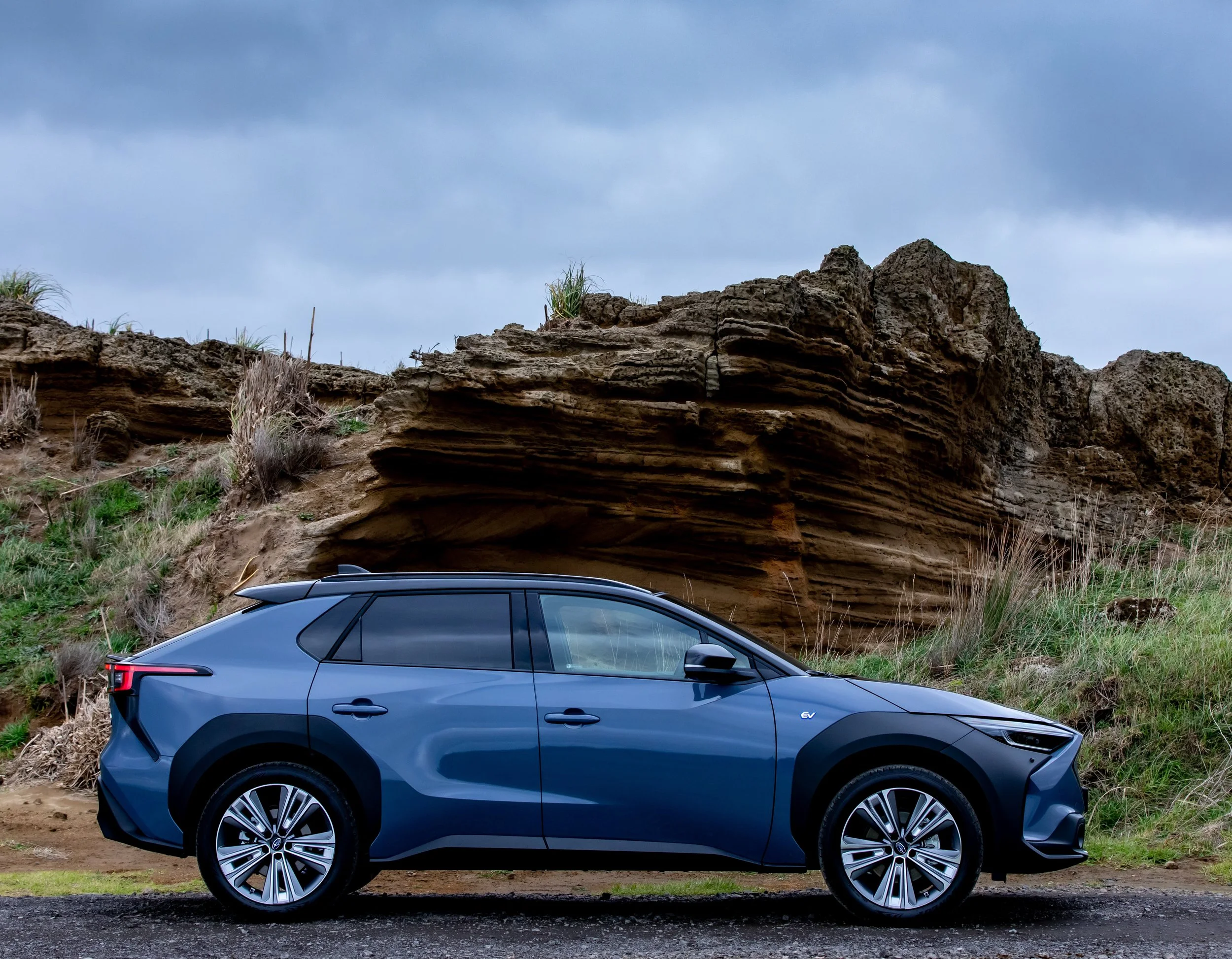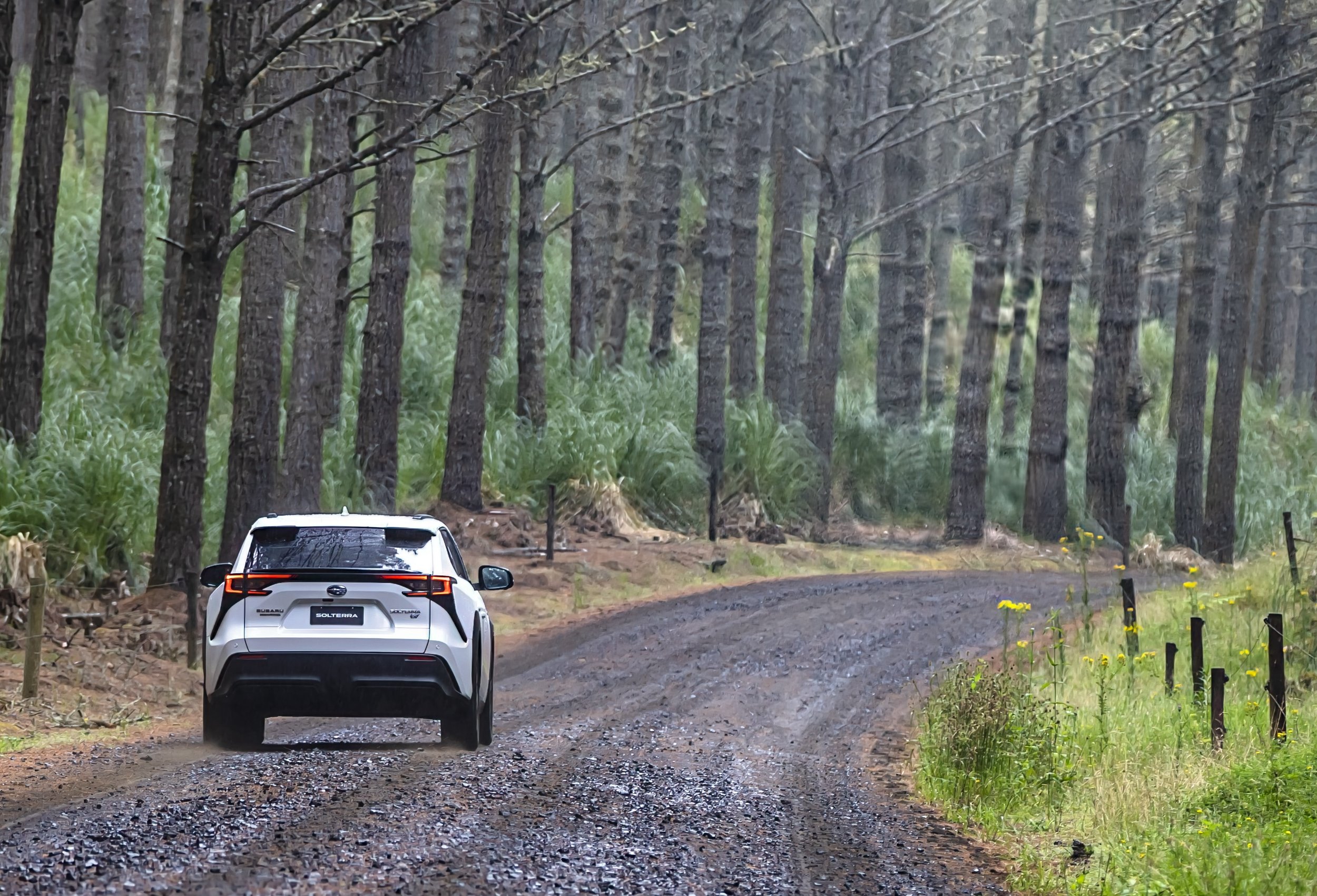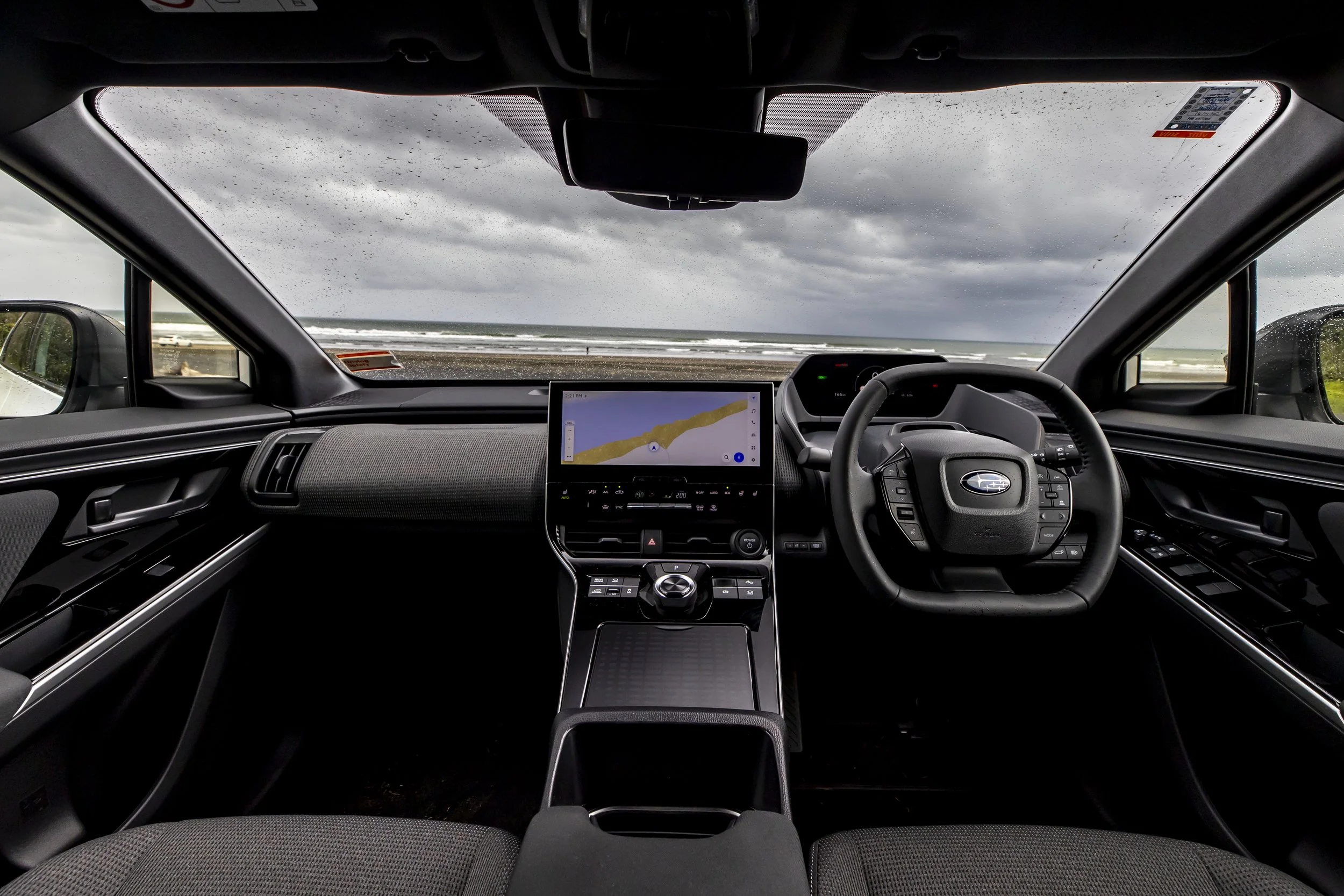Tricky market condition for Solterra
/RUCs, an emissions scheme review, rebates being history - just as well Subaru’s first battery car is built for the rough, because it’s now not a smooth road for electrics.
SUPPLY is sorted but no clear sense of how strong Kiwi enthusiasm for electric cars is right now means a cautious forecast from Subaru in respect to its first electric here.
“We just don’t know,” Subaru New Zealand managing director Wal Dumper says in response, at a media event today, to question about volume expectation for the Solterra.
“Cars are here now - we have 70 - and we have more coming, here by the end of the month.”
From thereon, it’ll seek to try to keep enough stock to meet demand, but not so much that vehicles stockpile.
It cannot see sense in bulk ordering what is the first of eight electrics Fuji plans to have out by 2028 and perhaps the only one that’s a co-development (with Toyota).
That’s not the brand’s style and it notes some other EV players are currently overstocked and having to discount. It doesn’t intend to follow suit.
So, effectively, from now on the supply rate will be dictated by customer demand, defined by dealership orders.
It’s not an order-only strategy, he says. Yet “we will not bring in hundreds of cars in hope we can sell them.
“Because of the uncertainty, we’re just being careful about the ordering. We have vehicles available but we are not ordering paddocks of vehicles.
“We’re ordering based on the run rate, to customer demand. If they want 20 a month, we can get 20 a month. If they want 10, we can get 10.”
As for an annual forecast? It’s not being considered. “If we can sell 1000, we will. If only 200 people want it? We’ll get them.”
Dumper agrees the strategy for Solterra - a name that derives from the Latin words for ‘sun’ and ‘earth’ - is less bullish now than when confirmation about its sale was aired in late-2022.
There are several reasons. Back then, the Clean Car Discount was in full swing and fuelling an EV gold rush.
Now the rebates have gone, the new car market last year, though okay at 149,000 units, was nonetheless 9.5 percent down. Additionally, road user charge will hit battery-driven cars from April 1, an extra cost that has riled some.
Government looking to review the Clean Car Standard, an emissions standard that affects distributors - with costs likely to pass off to buyers - is also in the wind and makes Dumper nervous.
It’s too soon to get a handle on the full cumulative effect, but Dumper admits he is wary, not least about CCS, which presently promotes electric with credits and also penalises most CO2 emitting product, with annual rise in imposts with a lowering CO2 average.
At the moment a brand with electric and petrols can use credits from importing the first to offset the cost of bringing in the second.
Dumper holds that it is a more sensible scheme than the now defunct Clean Car Discount - which entry Solterra had priced for - and he is nervous about any tampering.
“What if they take it away, what if they leave it, what if they increase it … there are so many imponderables. What should happen is that customers should decide. Not some … manufactured incentive.
“The Standard is a very good subsidy for bringing in EVs, and we’re going to use that.
“But of course the only way to use that subsidy is if you also have non clean cars, for what of a better word.
“We’re very fortunate that we have Outbacks, Foresters and Crosstreks that we pay tax on.
“But it’s not like you get a credit in money. We pay the tax in money, but credits expire after two years. So we are in a good situation that we can balance out.”
One enduring ace card is that Solterra, and a certain common DNA other, presents as the only all-wheel-drive medium electric sports utility electric with off-road ability.
That will be highlighted in a market slogan, “taking electric to where only all wheel drive can”.
Solterra has been confirmed as the hardest car Subaru NZ has ever tried to bring to launch, with over two years of frustrating setbacks. When the car was confirmed, launch in April 2023 was a done deal. But it didn’t happen.
There are no regrets about that early announcement. It was done for strategic reasons, Dumper says. “We wanted to make sure we were first to reveal the car, as opposed to, say, importers. It has taken a lot longer to get here than we ever imagined. But it’s a great car and we hope their (customers) patience will be rewarded.”
The last pre-release frustration was in December, when intent to kick into sale as a last-gasp rebate score was stymied when the factory didn’t fulfil the order.
Of 50 cars expected to land in time to claim the Government handout, just 11 got here. The errant 39 joined after Xmas.
As is, Subaru is still at least able to have its car in public hands ahead of it’s twin, the Toyota bZ4X. And that’s a small satisfaction.
The models are highly similar in look and have a common platform and powertrain, yet when cross-shopping occurs, it’s not a matter of mirror-imaging.
Solterra and bZ4X will each provision here in two variants - though to meet brand ethos, Subaru’s base $79,990 and $84,990 Touring formats are all-wheel-drive whereas, for Toyota NZ, the spread ticks front-drive, in $72,990 entry Pure and $82,990 AWD Motion. Also, there are specification differences.
Even so, in all-wheel-drive they are wholly common at technical level.
The cars are also on the same platform as the Lexus RZ 350e, already on sale in NZ, again with the same fundamentals although it has more power and is almost twice the price. Toyota assembles all three.
One positive from the delay in getting Solterra is that we see latest stock, with enhancements - also affecting bZ4X - that aim to reconcile gripes raised in early delivery markets, mainly the United States with has had the cars for almost a year.
The range out of the models’ 71.4kWh battery has been subject of ire about sub-par efficiency. The WLTP figures for this have barely altered, but the maker believes the optimal are more achievable now.
Announced at the Tokyo Auto Salon in October, the changes were deemed important enough by Toyota Japan to be rushed into production.
There are no revisions to the powertrain per se, but an updated software ups power by 10kW, with torque retained at 366Nm.
Reduced charging time in low-temperature environments and reduced power consumption are cited for the updated car.
Toyota claims the charging time from when the low-battery warning appears to 80 percent is reduced by up to 30 percent "under low outside temperatures" due to improved battery heating.
It also has an optimised air-conditioner with a power-saving eco mode to warm occupants through more efficient methods, such as the heated seats and steering wheel, and a humidity sensor that "detects cloudiness in the windshield and controls the timing of outdoor air capture more precisely”.
The instrument cluster will now display key charging information, including time to 80 percent and the difference in range between having the air-conditioner switched on or off.
Subaru NZ continues to hold that range will depend on driving style and road conditions.
It cites the base model, simply called Solterra, as being up for a highly credible 465 kilometres. That’s a five kilometre advantage over the initial call.
The more expensive Touring has ability to run 414kms before requiring replenishment; a penalty - identified in overseas’ tests - from it moving off the standard fare 18 inch rims onto 20 inch types.
The battery allows a 10-80 percent charge in 30 minutes at 150kW.
Common to both Solterra variants are a 10-way electric adjustable driver’s seat, front seat heaters and a power tailgate, dual zone air conditioning, wireless Apple CarPlay and Android Auto, satellite navigation, and a six-speaker stereo.
The Touring swaps out cloth trim for leather and adds wireless phone charging, a panorama sunroof, a power front passenger seat, a 10-speaker Harman Kardon sound system, achieves a heated steering wheel and has intelligent park assist. It can be ordered with a two-tone paint, which adds $1000.
Subaru Japan has committed to an electric future - it says 50 percent of its volume will be electric by 2030 will a 90 percent CO2 emissions reduction goal set for 2025.
Subaru NZ plans to take full advantage, though Dumper says what comes here and when will be dictated by “global doctrine, not by NZ Government law.”
The next BEVs behind the Pliedes badge will come in 2026, a year after the new generation Forester, with a different, stronger hybrid to that seen in the current type. The next car’s drivetrain will be one developed by Toyota, likely a revision of the RAV4 hybrid that has been a big seller here.
Toyota Japan, a Subaru shareholder, seems on another journey.
It is sticking to a broader ideal that favours different drivetrains, including a continuation of combustion engined choices, for different scenarios.
Latest comment ascribed this week to Toyota’s chairman, Akio Toyoda, is likely to antagonise, with his thought just 30 percent of global car sales will comprise electric.
The remaining share will be taken up by hybrids - a technology in which Toyota sets the global pace - hydrogen fuel cell vehicles and internal combustion-powered cars.
Says Toyoda: “I think engine cars will definitely remain.”
Toyota has pushed back against criticism of falling behind in the transition to electric vehicles, saying its preferred approach will ultimately prove to be the right approach for the business, customers and the environment.
A lot hangs on that being correct. Of the nearly 9.4 million vehicles it sold globally last year (including Lexus), only 95,000, or one percent, were all-electric. That’s well down on Volkswagen, for which EVs constitute nine percent of last year’s global take, and Hyundai, BMW, Mercedes, and Volvo, which are already hitting double-digit or 100 percent EV sales.






















